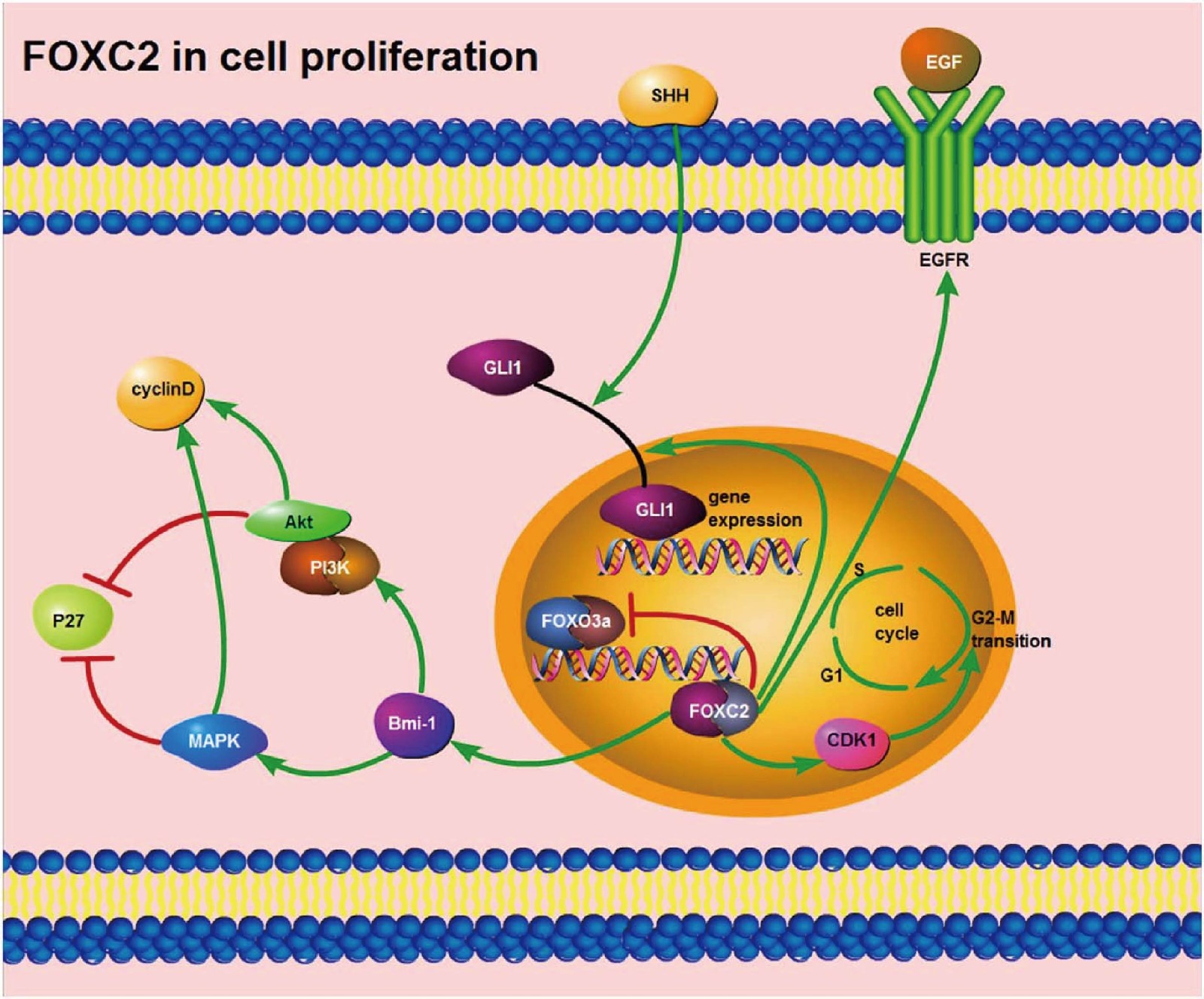
Our promise to you:
Guaranteed product quality, expert customer support.
 24x7 CUSTOMER SERVICE
24x7 CUSTOMER SERVICE
 CONTACT US TO ORDER
CONTACT US TO ORDER
FOXC2 Gene Editing 
Members of the forkhead box (FOX) transcription factor family share a common DNA binding domain. Forkhead box protein C2 (FOXC2, previously called MFH-1) is a member of the FOX protein family. It is a crucial regulator that controls the generation of vascular and lymphatic tissue. Epithelial-mesenchymal transition (EMT) is considered an important molecular mechanism inducing tumor development. EMT is a conserved embryonic cellular trans-differentiation programme, seen in the development and pathological conditions such as fibrosis, wound healing, and in aggressive carcinomas. In EMT, the polarised epithelial tumor cells shift to a motile, mesenchymal-like phenotype, thereby allowing the tumor cells to become invasive and to metastasize. FOXC2 is considered to be an EMT inducer and to be involved in tumor invasion and metastasis.
Functions of FOXC2 in Physiology and Pathology
FOXC2 is a key regulator of lymphangiogenesis, adipocyte metabolism, skeletal tissue development, and lung maturation. Besides, FOXC1 and FOXC2 cooperatively control developmental processes such as renal, cardiovascular and somite development. Recently, FOXC1 is identified as a key regulator for the niche formation of hematopoietic stem and progenitor cells, as well as hair follicle stem cells. FOXC2 is also necessary for maintaining murine spermatogonial stem cells. Many mutations in FOXC2 have been reported, including nonsense and missense mutations, small deletions and insertions. Mutations in the DNA binding domain of FOXC2 have also been reported to result in lymphoedema distichiasis syndrome (LDS), an inherited primary lymphedema. Moreover, growing evidence identified the emerging roles of FOXC proteins in the initiation and development of cancers. Elevated expression of FOXC2 occurs in various cancers such as breast carcinoma, lymphoma, hepatocellular carcinomas, and so on. They promote cancers by mediating cell proliferation, metastasis, EMT, angiogenesis and lymphangiogenesis.
FOXC2 Promotes Cancer Cell Proliferation
Emerging evidence has shown the importance of FOXC2 in cell proliferation and subsequent cancer growth. FOXC2 functions in cell proliferation mainly by interacting with several kinases. In glioblastoma, FOXC2 regulates both transcriptional and translational expression levels of epidermal growth factor receptor (EGFR). Similarly, in colorectal carcinoma, FOXC2 prompts the proliferation of cancer cells via the activation of two kinases: mitogen-activated protein kinase (MAPK) and phosphatidylinositol 3-kinase (PI3K)/AKT, as well as simultaneously suppressing FOXO3A, the substrate of AKT. Given the evidence that the MAPK and AKT pathways promote cell proliferation in multiple cancers, it is reasonable to propose that FOXC2 could cooperate with the MAPK and AKT pathways in cell proliferation in many other cancer types. Notably, the PI3K/AKT and MAPK signaling pathways are also crucial mechanisms involved in FOXC2 promotion of chemoresistance. For example, activation of the PI3K/AKT and MAPK signaling pathways is thought to participate in FOXC2-driven cisplatin (CDDP) resistance of ovarian cancer cells by reducing CDDP-induced apoptosis. Another regulatory mechanism of FOXC2-promotion of cell proliferation in breast cancer cells is through activation of glioma-associated oncogene homolog 1 (GLI1) by the sonic hedgehog (SHH)/GLI1 signaling pathway. Besides, FOXC2 was also found to promote cell proliferation in many other cancers, including ovarian cancer, oral and tongue squamous cell carcinoma, and pancreatic ductal adenocarcinoma.
 Figure 1. Illustration of the function of FOXC2 in cancer cell proliferation. (Wang T, et al., 2018)
Figure 1. Illustration of the function of FOXC2 in cancer cell proliferation. (Wang T, et al., 2018)
FOXC2 Gene Editing Service
CRISPR/Cas9 PlatformCB at Creative Biogene is dedicated to offering comprehensive CRISPR/Cas9 gene editing services and products for academic research, biotech research and pharmaceutical drug discovery. With deep gene editing knowledge and extensive experience in experimental operation and data processing, we help you effectively control FOXC2 genes knockout/knockin/point mutation in cells or animals via CRISPR/Cas9 technology.
| Service | Details | Alternative cell lines or animal species |
| FOXC2 Gene Editing Cell Line Generation | gRNA design and synthesis Transfect the cell lines you're interested Select the high expression cells and sort monoclonal cell Validate the knockout/knockin/point mutation of FOXC2 by PCR and sequencing Provide cryogenic preserved vials of stable cells and final reports | HEK239T, Hela, HepG2, U87, Ba/F3, CHO, MDA-MB-453, MDA-MB-231NIH3T3, T47D, Neuro2a, MCF7, RKO, K562, RAW264.7, etc. |
| FOXC2 Gene Editing Animal Model Generation | FOXC2 gene conventional knockout animals FOXC2 gene conditional knockout animals FOXC2 point mutation animals FOXC2 knockin animals | Mouse, rat, rabbit, zebrafish, C. elegans, etc. |
Related Products at CRISPR/Cas9 PlatformCB
References
- Wang T, et al. Emerging roles and mechanisms of FOXC2 in cancer. Clinica Chimica Acta, 2018, 479: 84-93.
- Børretzen A, et al. FOXC2 expression and epithelial–mesenchymal phenotypes are associated with castration resistance, metastasis and survival in prostate cancer. The Journal of Pathology: Clinical Research, 2019, 5(4): 272-286.
- Chen X, et al. Structural basis for DNA recognition by FOXC2. Nucleic acids research, 2019, 47(7): 3752-3764.
- Xu B, et al. Meta-analysis of the prognostic significance of FOXC2 in various tumors. Journal of International Medical Research, 2019: 0300060519891648.